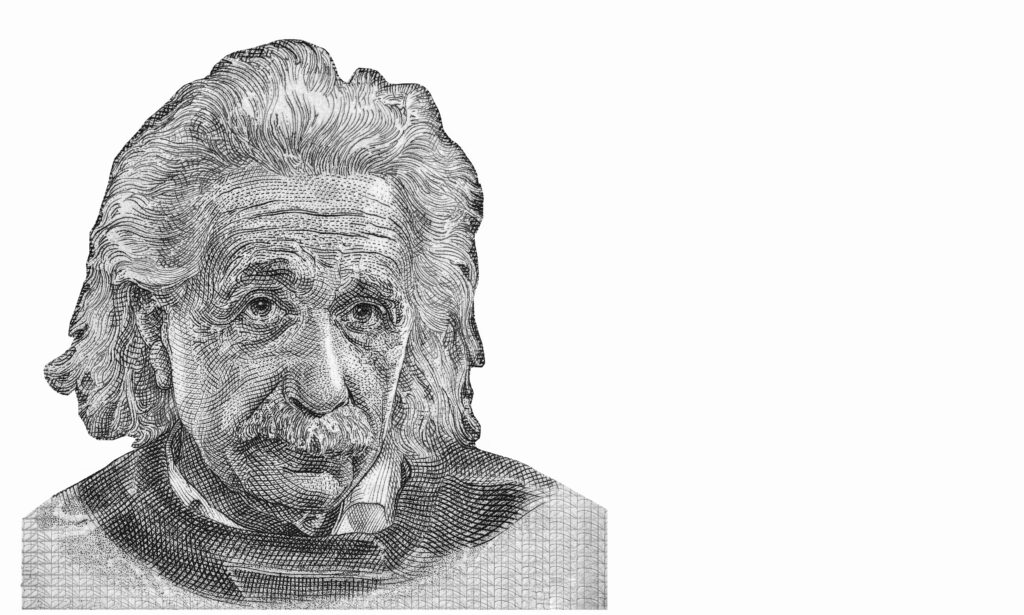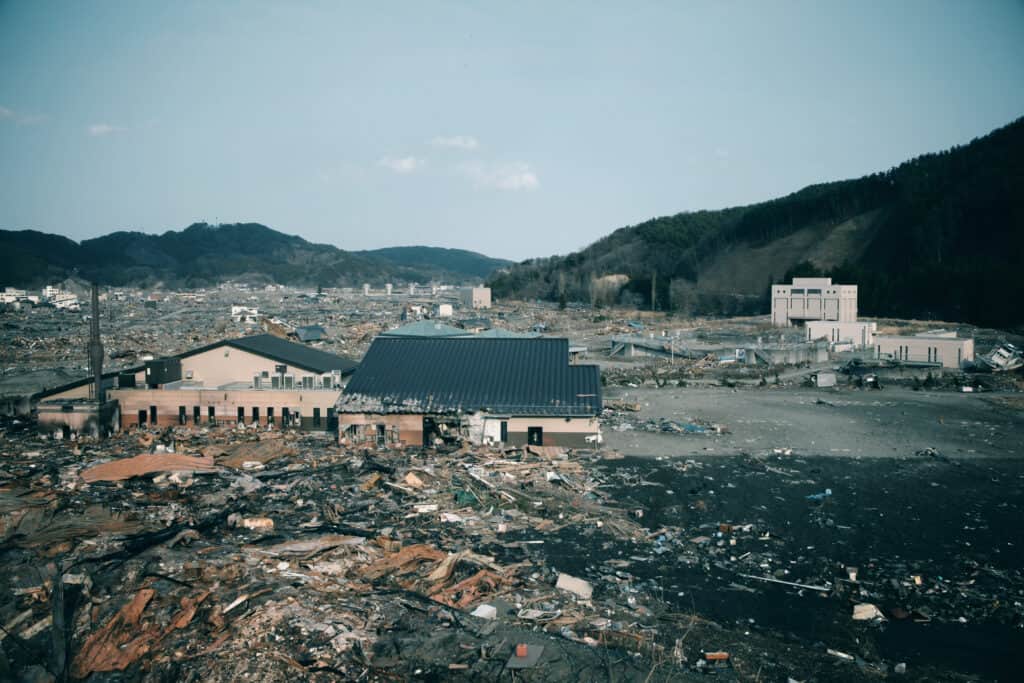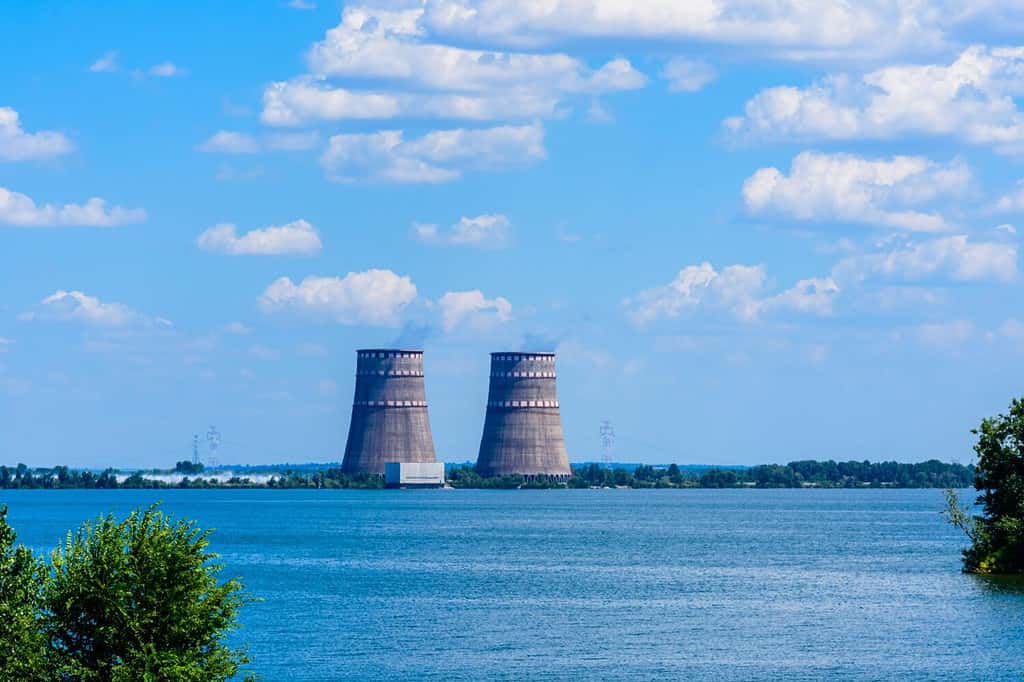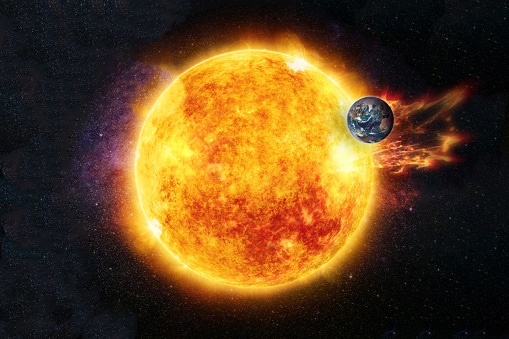While most of us are familiar with the iconic mushroom cloud from nuclear bombs, we don’t really look too deeply at what’s going on inside. Whether it’s the city-destroying atom bomb in a race-against-the-clock thriller or the Large Hadron Collider’s top quark-creating collisions, the energy released by so little material boggles the human mind. Join us on a journey into the atomic world. Here, we’ll delve into the distinctions between fission and fusion. We’ll examine how each process releases energy and produces waste. Regulatory and safety concerns will also be on our agenda. Additionally, we’ll scrutinize ongoing controversies in the nuclear field. We’ll explore the practical uses and limitations of both fission and fusion. Finally, we’ll share some recent breakthroughs in the exciting realm of fusion energy.
Nuclear Reactions and the World’s Most Famous Equation
Albert Einstein’s equation (E=mc^2) is a cornerstone when discussing nuclear fission and fusion. As you may recall from introductory physics courses, this groundbreaking equation connects energy (E) to mass (m) and the speed of light, or the constant (c), which is about 299,792,458 meters per second. The equation shows that you can convert a small amount of mass into a significant amount of energy, and vice versa. This is precisely what happens in nuclear fission and fusion reactions, making them far more powerful than chemical reactions.

Probably the most readily recognizable Nobel Laureate, Albert Einstein’s work continues to inform basic science research.
©Prachaya Roekdeethaweesab/Shutterstock.com
Einstein’s Equation and Nuclear Fission
When a heavy nucleus like uranium-235 splits in nuclear fission, the resulting smaller nuclei have a slightly smaller total mass than the original. This “missing” mass hasn’t actually disappeared. It’s been converted into energy according to Einstein’s equation. The “missing” mass, when multiplied by the square of the speed of light, gives the energy produced by the fission reaction. Hence: E=mc^2. Given the enormous value of C-squared, even a minuscule change in mass can result in a vast amount of energy. This is why a single uranium-235 nucleus can release a staggering 200 million electron volts (MeV). By comparison, for carbon to release the equivalent amount, it would require the combustion of 33 million carbon atoms. Both controlled reactions in nuclear reactors and uncontrolled reactions in atomic bombs commonly induce fission artificially.
Einstein’s Equation and Nuclear Fusion
Fusion works on the same principle, but in reverse. In the sun, hydrogen nuclei come together to form helium. During this process, the mass of the resulting helium nucleus is slightly less than the sum of the original hydrogen nuclei. The “missing” mass converts into energy, as dictated by E=mc^2. The sun emits heat and light as by-products of countless fusion reactions, transforming mass into energy on a cosmic scale. To put it in perspective, the sun’s estimated energy output stands at around 3.8 x 10^{26} watts, originating mostly from this mass-to-energy conversion. This is roughly enough energy, at current consumption levels, to power the entire world for 20 million years.

The positively charged nucleus of an atom is enveloped in a cloud of negatively charged electrons.
©Dabarti CGI/Shutterstock.com
Differences in Energy Release and Waste Production
Energy Release
Fusion wins the energy game by a landslide. The energy yield of fusion per unit mass is far higher than that of fission. To compare, the US Department of Energy estimates that a pickup truck’s worth of fusion fuel can produce as much energy as 10 million barrels of oil. If fission is the energy equivalent of running a marathon, fusion is an ultramarathon run at a sprinter’s pace. Fusion reactors are likely to come online at scale in the near future (more on why below) and will likely either take the form of a series of tokamaks, stellarators, or some combination of both.
Waste Production
Fission creates radioactive waste, which poses a long-term disposal problem. Think of this waste as the nuclear version of toxic sludge—harmful and challenging to get rid of. Fusion, by contrast, produces little to no long-lived radioactive waste. It’s almost like comparing a wood-burning stove that leaves behind ashes and soot with a solar panel that operates cleanly.
Safety Concerns and Regulatory Issues
Fission’s Long Tail
Fission reactors, while a proven source of energy, come with their own set of safety concerns. The most notorious incidents, such as the Chernobyl disaster in 1986 and the Fukushima Daiichi nuclear disaster in 2011, have left indelible marks on public perception. Regulatory bodies like the Nuclear Regulatory Commission (NRC) in the US have implemented stringent protocols to mitigate these risks. For instance, the NRC mandates multiple layers of safety barriers, including containment structures and emergency cooling systems, to prevent the release of radioactive material.
However, the potential for catastrophe remains, particularly due to human error or natural disasters. The Fukushima disaster was a case in point, where a massive earthquake and subsequent tsunami overwhelmed the plant’s safety measures. Moreover, the disposal of radioactive waste remains a significant challenge, requiring long-term storage solutions that are both secure and environmentally sustainable.
Fusion, the Clean Energy Promised Land
Fusion energy, often hailed as the “holy grail” of clean energy, has inherent safety features that make it less risky than fission. Unlike fission reactors, fusion reactions would quickly dissipate if something went awry, eliminating the risk of a catastrophic meltdown. This is because fusion reactions require extremely high temperatures and pressure to sustain; any disturbance would naturally quell the reaction.
However, the road to viable fusion energy is fraught with regulatory hurdles. Given the immense energies involved, regulatory bodies will likely impose a complex web of safety protocols. These could range from material specifications for the reactor’s containment structure to emergency response plans in case of equipment failure. Additionally, the international nature of many fusion research projects, like ITER, necessitates a coordinated global regulatory framework.

The strongest form of nuclear waste from fission reactions remain radioactive for around 1 million years. However, most types of uranium ore waste can return to natural levels of radioactivity within a few hundred years.
©tiero/iStock via Getty Images
A Closer Look at the Ongoing Incidents and Dangers, Real, Potential, and Perceived
The Fukushima Daiichi Dilemma: Decommissioning Controversies and Wastewater Woes
Fukushima Daiichi remains a testament to the perils of nuclear fission. The tragic meltdown in 2011 has culminated in a complex, laborious decommissioning process that might extend for decades, perhaps even a century. The primary challenges involve dealing with an ever-growing volume of radioactive wastewater and the daunting task of removing melted fuel debris from the reactors.
The Wastewater Conundrum
Japan has begun a gradual, 30-year plan to release treated wastewater into the ocean—a move that has garnered significant controversy. The release aims to clear valuable space needed for facilities to store highly contaminated waste and advance the decommissioning process. However, this effort will only empty about 1% of the more than 1,000 tanks currently holding radioactive wastewater. Moreover, the slow rate of water release means that decommissioning won’t speed up immediately; operating reactors continue to produce more wastewater.
Challenges in Fuel Debris Removal
The decommissioning process is a labyrinth of technical difficulties. About 880 tons of melted fuel debris linger in the damaged reactors. The state of this debris remains largely unknown, and for some reactors, methods for its removal are still not finalized. The work is dangerous, exposing plant workers to high levels of radiation. While the Japanese government ambitiously aims to finish decommissioning by 2051, experts argue that it might take between 50 to 100 years if it can be completed at all.
Diplomatic and Social Backlash
To quell concerns about the safety of local seafood, Japanese Prime Minister Fumio Kishida and cabinet ministers recently dined on Fukushima fish sashimi. (The US Envoy to Japan, Rahm Emmanuel, recently repeated Prime Minister Kishida’s stunt.) However, the move failed to mitigate opposition from fishing groups and sparked diplomatic tensions, leading China to ban imports of Japanese seafood. Faced with global protests and even harassment, Japan is now contemplating bringing the issue before the World Trade Organization.
Looking Ahead
As Japan wrestles with the dual challenge of ensuring safety while advancing decommissioning, questions loom large. Will the wastewater release significantly help the decommissioning process, given its limited scope and the continuous generation of new waste? Can Japan successfully remove the highly radioactive fuel debris without exposing workers to excessive risks? And how will the international community respond to these unprecedented actions?
While some celebrate the wastewater release as a milestone, it might be more appropriate to see it as a single, contentious step in a marathon fraught with uncertainty, technical challenges, and geopolitical ramifications. The Fukushima saga underscores the broader debate around nuclear energy, blending questions of technology, safety, and international diplomacy into a complex, volatile mix.

The devastation from the 2011 earthquake and tsunami in Fukushima was of epic proportions.
©Fly & Dive/Shutterstock.com
The Sword of Damocles: Ukraine’s Zaporizhzhia Nuclear Plant Amid Rising Conflict
In the backdrop of escalating hostilities in Ukraine, the Zaporizhzhia nuclear power plant has rapidly emerged as a ticking time bomb. Rafael Mariano Grossi, the head of the International Atomic Energy Agency (IAEA), has issued urgent calls for immediate action to mitigate the impending risk of a severe nuclear accident at the facility. At twice the size of the infamous Chernobyl plant, Zaporizhzhia exudes an atmosphere thick with the smell of war. Reports of evacuations, panic, and shelling have ratcheted tensions to a breaking point.
On Shaky Ground: Evacuations and Ignored Warnings
In addition to the nuclear facility, it’s also the people and the environment around it who are under threat. It has thrown into chaos the area surrounding Zaporizhzhia. Residents from the nearby town of Enerhodar have commenced evacuating, creating shortages, and adding another layer of misery to an already dire situation. Shelling has become part of the daily life for the local population, each explosion fueling fears of a catastrophic nuclear accident.
Risk Amplified by Occupation
The plant remains under the technical management of Ukrainian staff, but the Russian military has a stranglehold on the facility. The US has explicitly accused Russia of sidelining the colossal radiological risks, turning a blind eye to the potential for disaster. It is a paradoxical situation where Ukrainian technicians are running the day-to-day operations, but the overhanging presence of Russian forces muddles the security landscape, adding an intricate layer of complexity to an already volatile situation.

Europe’s largest nuclear power plant, Zaporizhzhia Nuclear Power Station, is under threat not only from bombs and missile strikes, but also from lack of access due to war.
©Ihor Bondarenko/Shutterstock.com
Timeline of Major Nuclear Incidents
| Year | Incident | Location | Impact and Aftermath |
|---|---|---|---|
| 1957 | Kyshtym Disaster | Soviet Union | Significant radioactive contamination; first major nuclear accident. |
| 1979 | Three Mile Island | Pennsylvania, USA | Partial reactor meltdown; no deaths but raised public concern. |
| 1986 | Chernobyl Disaster | Ukraine, USSR | Catastrophic reactor explosion; long-term environmental and health impact. |
| 1999 | Tokaimura Nuclear Accident | Japan | Criticality accident; two workers died. |
| 2011 | Fukushima Daiichi | Japan | Reactor meltdowns due to earthquake and tsunami; ongoing cleanup. |
| 2019 | Russian Naval Accident (Losharik Submarine) | Russia | Explosion killed 14; details mostly classified. |
| 2022 | Ukrainian Nuclear Plant Incident | Ukraine | Conflict-related incident; exact impact not fully disclosed but raised international concern. |
| 2023 | Ongoing Efforts to Manage Waste and Decommissioning Challenges | Global | Continued global efforts to manage nuclear waste and decommission aging reactors. |
Applications and Limitations of Both Fission and Fusion
Overview
Fission
Fission serves as a cornerstone for electricity generation, akin to the diesel engine in the realm of energy—efficient but environmentally contentious. The stumbling blocks for fission lie in the radioactive waste generated and the finite availability of uranium fuel.
Fusion
Frequently heralded as the “energy of the future,” fusion offers the tantalizing prospect of nearly limitless, eco-friendly energy. However, sustaining a controlled fusion reaction on Earth resembles the Herculean task of containing a fragment of the Sun—demanding astronomically high temperatures and pressures. Currently, fusion remains largely in the experimental phase, with initiatives like ITER striving to turn theory into practice.
Nuclear Fission Applications Currently in Use
Electricity Generation
Most people’s familiarity with fission comes from its role in powering nuclear reactors. This application has been relatively well-established since the mid-20th century. According to the World Nuclear Association, fission provides about 10% of global electricity, with about 440 power reactors.
Medical Isotope Production
Fission produces radioactive isotopes essential for medical diagnostics and treatments. For instance, doctors use iodine-131 to treat thyroid disorders. Additionally, there are currently about 220 research reactors around the world.
Propulsion
Nuclear-powered submarines and aircraft carriers use fission reactors as their energy source. The high energy output allows these vessels to operate for extended periods without refueling.
Space Exploration
Radioisotope thermoelectric generators (RTGs), which use heat generated from radioactive decay, have powered space missions like the Voyager probes and the Mars Curiosity Rover.
Research
Scientists use fission in a range of investigations, from studying atomic structures and behaviors to conducting neutron scattering experiments that explore material properties.
Weapons
Unfortunately, fission also has a darker side; it’s the technology behind atomic bombs. The devastation witnessed in Hiroshima and Nagasaki serves as a grim testament to its destructive power.
Nuclear Fusion Applications Currently in Use
Stellar Processes
While not a human “use,” fusion is the process that powers stars, including our Sun. This natural fusion reaction is the energy source for all life on Earth, whether we realize it or not.
Weapons
Fusion is also the principle behind hydrogen bombs, far more powerful than their fission-based counterparts. While controlled fusion for energy production remains elusive, uncontrolled fusion in weapons has sadly become a reality.

Imagine harnessing the fusion energy of the sun without getting burned. Well, that’s the dream of so-called “cold fusion.”
©Elen11/iStock via Getty Images
Promising Yet Controversial: The Story of Cold Fusion
It sounds like something out of a science fiction novel: a clean, abundant source of energy without the need for extreme heat or radiation. Enter cold fusion, also known as Low-Energy Nuclear Reactions (LENR). This intriguing concept has received a boost with recent grants from government agencies like ARPA-E. Yet, decades after chemists Martin Fleischmann and Stanley Pons first ignited the world’s imagination with their claims, the field remains fraught with skepticism and controversy.
Cold Fusion in 1989
Martin Fleischmann and Stanley Pons triggered a storm of attention when they claimed to have produced heat and nuclear byproducts through a tabletop experiment. However, their work couldn’t be consistently replicated, and the scientific community largely discredited their claims.
Today’s Landscape
While still met with skepticism, a tight-knit community of researchers are invigorated by new funding opportunities. However, without a widely accepted theory or model to explain the phenomena, the field remains at the fringes of scientific discourse.
Fusion Breakthroughs at Lawrence Livermore National Laboratory
The National Ignition Facility (NIF) at Lawrence Livermore National Laboratory is now not just about exploring the stars but also about bringing their energy down to Earth. Their recent experiments have reached a new milestone: net energy gain in nuclear fusion, i.e., being in the black.
Breakthrough One, December 5, 2022
The first time NIF surpassed the breakeven point, the facility managed to generate more energy from fusion reactions than what was put in to initiate them.
Breakthrough Two, July 30, 2023
The second time around, NIF pushed even further. The produced energy was higher than the previous successful attempt, reaffirming the scientific community’s faith in fusion as a clean and abundant energy source.
Roadblocks Ahead
The journey to commercial fusion still has several roadblocks. The technology is not yet ready for large-scale deployment, and considerable engineering and efficiency challenges lie ahead.
Space Travel Reimagined: The Promise of Fusion Propulsion
Imagine a future in which traveling to Mars takes half as long as it does today. It’s not just a lofty dream but a potential reality, thanks to companies like Pulsar Fusion.
Fusion-Powered Rockets
Pulsar Fusion is making strides in developing the largest fusion rocket engine ever. If successful, this engine could halve travel times to Mars and beyond.
Direct Fusion Drive
Beyond just propulsion, Pulsar’s Direct Fusion Drive (DFD) aims to be an all-in-one solution, offering both thrust and electrical power for spaceships. This means not just faster travel, but also enhanced scientific capabilities once the spacecraft reaches its destination.
Challenges and Optimism
Achieving and maintaining fusion reactions presents a significant challenge, and we still have much to accomplish before fusion-driven spaceships become a reality. However, this technology holds unprecedented promise for revolutionizing space travel and energy solutions here on Earth.

Insulating foam from the external tank broke off during launch and damaged the thermal protection of the Columbia space shuttle’s left wing. On its February 1, 2003, return to Earth, the shuttle disintegrated in the atmosphere, killing all seven astronauts. With advanced systems, the future of space travel will not require external tanks for fuel.
Prominent Scientists Comment
On Nuclear Fission
Richard Feynman
“Fission is a process of decay, which means it’s more of a natural process that happens whether humans are there to exploit it or not.”
Feynman, a renowned physicist, touched upon the natural occurrence of fission reactions, such as those happening in radioactive materials, emphasizing that fission is fundamentally a process of decay rather than a created reaction.
Hans Bethe
“The chain reaction is a one-way trip to a new kind of energy generation, but also a one-way ticket to potential disaster if not managed carefully.”
Hans Bethe, who played a significant role in the development of nuclear energy, underlined the dual nature of fission: its immense energy-generating capabilities and the inherent risks involved.
On Nuclear Fusion
Steven Cowley
“Fusion is 30 years away and always will be until we change the timeline by confronting the engineering challenges head-on.”
Steven Cowley, a leading researcher in fusion energy, highlights the “always 30 years away” joke that’s often made about fusion, urging the scientific community to tackle engineering problems to make fusion a reality.
Michio Kaku
“Fusion is the energy of the universe, and it’s clean. We just have to crack the engineering problem to bring it to Earth.”
Physicist and futurist Michio Kaku points out the universal prevalence of fusion (like in our sun) and its potential as a clean energy source if only the engineering challenges could be overcome.
On Both Fission and Fusion
Edward Teller
“Fission is easy to achieve, but hard to control; Fusion is hard to achieve but easy to control.”
Known as the “father of the hydrogen bomb,” Edward Teller highlighted the contrasting natures of fission and fusion. While fission is relatively easy to initiate, its chain reactions can quickly become uncontrollable. Fusion, on the other hand, is difficult to achieve but inherently more stable.
On Pulsar Fusion and Fusion Propulsion
Stephanie Thomas (Princeton Satellite Systems)
“Fusion propulsion could turn science fiction into science fact.”
Involved in the development of Direct Fusion Drive (DFD), Stephanie Thomas emphasizes the revolutionary potential of fusion propulsion for space exploration.
These comments underline the scientific community’s generally optimistic yet cautiously realistic stance on both fission and fusion. Both hold enormous promise but come with their own sets of challenges and ethical considerations. Whether we lean towards the cautionary wisdom of Feynman and Bethe, or the aspirational vision of Cowley and Kaku, the key takeaway is that mastering either fission or fusion (ideally both) will require not just scientific ingenuity but also robust ethical and safety frameworks. The real question then becomes: How much of humanity’s blood, brain, and treasure are we willing to put into this carbon-free future?
Thank you for reading! Have some feedback for us? Contact the AZ Animals editorial team.








